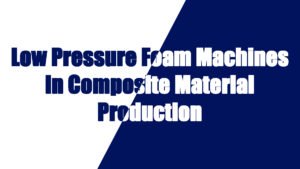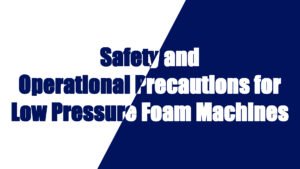When producing elastomer materials (such as rubber-like elastomers), several conditions need to be met to ensure that the material exhibits the desired elastic properties—i.e., the ability to return to its original shape after deformation. Here is a detailed guide to the key conditions in elastomer production, supported by relevant data.
Polymer Structure and Chemical Composition
High Molecular Weight
The molecular weight of the polymer significantly affects its elasticity. Typically, polymers with a molecular weight between 50,000 and 200,000 show optimal elasticity. Polymers with low molecular weight have shorter polymer chains, resulting in poor elasticity, while polymers with excessively high molecular weight have poor processability due to long, tangled chains.
Crosslinking (Vulcanization)
Crosslinking is essential to form a network structure, which significantly improves the elastic properties of elastomers. A low degree of crosslinking (around 10%) provides higher elongation (up to 800%), but lower mechanical strength. In contrast, a high degree of crosslinking (between 30% and 50%) increases strength and durability but reduces elongation (usually between 200% and 400%).
Additives and Compounding
Plasticizers
Plasticizers are added to enhance flexibility and elasticity by lowering the glass transition temperature (Tg). Studies show that adding 5% to 20% of plasticizer typically improves the elongation at break and flexibility of the polymer. For instance, adding plasticizers can increase the elongation at break by 50% to 100%.
Fillers
Fillers, such as carbon black, silica, or clay, are used to enhance specific properties such as wear resistance and aging resistance. Typically, filler content ranges from 20% to 50% depending on the desired balance between elasticity and mechanical properties. Excessive filler use can decrease flexibility and elasticity.
Temperature Control
Curing Temperature
The curing (vulcanization) temperature plays a crucial role in the elastomer’s properties. For most elastomers, the curing temperature is typically in the range of 150°C to 180°C. If the temperature is too high, it can lead to excessive crosslinking, making the material stiffer and less elastic. Conversely, too low a temperature may result in incomplete crosslinking, leading to poor elasticity.
Processing Temperature
The processing temperature of elastomers, such as during mixing or molding, usually ranges from 40°C to 80°C. If the temperature is too low, the polymer chain mobility will be insufficient, making the material difficult to process. If it is too high, the polymer may degrade, affecting the final material’s elasticity.
Crosslinking Density
Low Crosslinking Density
Materials with low crosslinking density (around 10%) usually exhibit higher elongation (up to 500%) but have lower mechanical strength and wear resistance. Such materials are more flexible and elastic but may not be suitable for high-strength applications.
High Crosslinking Density
High crosslinking density (around 30% to 50%) increases material strength, wear resistance, and durability, but reduces flexibility. For example, high crosslinking elastomers typically have an elongation of 200% to 400%. These are ideal for applications requiring higher mechanical strength, such as seals or automotive components.
Compounding and Processing
Mixing and Compounding Temperature
Proper mixing and compounding temperatures are critical for ensuring uniform distribution of additives. Typically, the mixing temperature is maintained between 50°C and 90°C. If the temperature is too low, the additives may not mix well, affecting the final material properties. Conversely, if the temperature is too high, premature crosslinking might occur, impairing the subsequent processing steps.
Extrusion and Molding
In extrusion, the temperature should be controlled between 160°C and 200°C for optimal flow and molding. If the temperature is too low, the polymer may not flow adequately, resulting in poor molding. If the temperature is too high, the polymer may degrade, reducing the final material’s elasticity.
Environmental Factors
Humidity Control
Humidity has a significant effect on elastomer processing. In some cases, excessive moisture can interfere with the curing process, leading to incomplete crosslinking and poor elasticity. The optimal humidity range for processing elastomers is typically 40% to 60%.
Air Quality
During the production process, dust and pollutants in the air can impact surface quality and material properties. It is essential to maintain a clean environment, typically with particulate levels below 0.5 microns, especially when dealing with high-performance elastomers like seals or gaskets.
Curing Time and Pressure
Curing Time
The curing time affects the degree of crosslinking. Curing times for elastomers typically range from 10 to 30 minutes, depending on the material. If the curing time is too short, crosslinking may be incomplete, and the material will lack elasticity. Conversely, too long a curing time can result in over-cured elastomers, making the material brittle.
Curing Pressure
The curing pressure is typically controlled between 6 MPa and 12 MPa. Low pressure may lead to incomplete crosslinking, while excessive pressure can cause shape distortion or material embrittlement. The key is to balance the pressure to ensure optimal elasticity and mechanical strength.
Quality Control and Testing
Tensile Testing
Tensile testing is an essential measure of an elastomer’s elasticity. For instance, certain polyurethane elastomers exhibit elongation at break of 500% to 800%, while silicone elastomers can reach 400%. Tensile testing helps assess how the material behaves under stress, including its elongation and recovery.
Hardness Testing
Hardness is another critical factor in elastomer production, affecting flexibility and application suitability. Elastomers generally have a Shore A hardness range of 30A to 50A, with harder materials reaching 60A or higher. For elastomers used in soft applications, lower Shore A values are preferred, while harder materials are used in applications requiring higher durability.
Health, Safety, and Environmental Protection
Chemical Safety
Elastomer production involves the use of chemicals such as curing agents and accelerators, which can pose health risks. It is crucial to implement proper safety protocols, such as using respirators and protective clothing, to prevent exposure to harmful chemicals.
Emission Control
Volatile organic compounds (VOCs) and other pollutants can be released during the production process. It is essential to install effective emission control systems, such as closed-loop systems or air scrubbers, to minimize environmental impact and comply with regulations.
Recycling and Sustainability
Waste Recycling
Recycling elastomer waste, such as scraps and edge trimmings, can significantly reduce material costs and environmental impact. Studies show that elastomer waste recycling rates can reach 80% or more, especially in rubber and polyurethane production.
Eco-friendly Materials
There is increasing focus on using sustainable and bio-based materials in elastomer production. By incorporating renewable raw materials and biodegradable additives, manufacturers can reduce their environmental footprint and meet the growing demand for green products.
Advanced Technologies and Trends in Elastomer Production
With the continuous advancement of production processes, elastomer manufacturing is undergoing significant optimization. Several cutting-edge technologies are transforming traditional elastomer production workflows, improving product quality, reducing energy consumption and waste, and promoting sustainable material development.
Smart Production and Automation Technology
In modern elastomer manufacturing, automation and intelligent systems are becoming increasingly prevalent. Many companies have adopted robotic arms, automated material feeding systems, and intelligent control equipment to manage production lines. Real-time monitoring and data analytics allow precise control over key parameters (e.g., temperature, humidity, pressure), improving production efficiency and ensuring consistent product quality.
For instance, some advanced mixing equipment automatically adjusts the mixing speed and temperature based on material properties, eliminating human error and ensuring optimal elastomer performance. Automated material feeding systems can also automatically add various chemicals based on specific formulations, reducing raw material waste and increasing utilization efficiency.
Green Production and Environmental Technology
With the rising global emphasis on environmental protection, green production processes and environmentally friendly technologies have become a critical focus in elastomer manufacturing. For example, many manufacturers have introduced water-based coatings and solvent-free materials to reduce volatile organic compound (VOC) emissions. Additionally, recycling technologies are being widely adopted to reuse waste and scrap materials, minimizing waste generation and improving material efficiency.
Some companies are also working on developing bio-based or biodegradable elastomers to replace traditional petroleum-based polymers, reducing the environmental impact of production and aligning with increasingly stringent environmental regulations.
Versatility of Elastomer Materials and Expanding Applications
As demand for elastomers continues to grow, their range of applications is also expanding. In traditional industries, elastomer materials have become indispensable, while new sectors present broad opportunities for elastomer adoption.
Automotive Industry
In the automotive industry, elastomer materials are widely used in seals, gaskets, seat cushions, headlights, oil seals, and vibration damping pads. These materials help absorb shocks, reduce vibrations, and enhance the comfort and durability of vehicles.
According to market research, the global automotive elastomer market is expected to grow at a rate of 4% annually from 2024 to 2028, reaching a market size of $16 billion. This growth trend is primarily driven by the increasing demand from automakers for elastomer materials to enhance vehicle lightweighting, fuel efficiency, and comfort.
Medical Industry
In the medical field, elastomer materials are used in various applications such as medical device gaskets, seals, infusion devices, and surgical gloves. Because of their excellent biocompatibility and chemical stability, elastomers ensure long-term safety and reliability in medical applications.
For example, polyurethane elastomers are commonly used in the manufacturing of catheters, guidewires, and artificial joints, providing excellent elasticity, abrasion resistance, and oxidative stability, which are crucial for these high-performance medical devices.
Sports Equipment
Elastomer materials are also increasingly applied in sports equipment, as more people become aware of health and fitness. High-performance elastomer materials, such as polyurethane elastomers and silicones, are widely used in sports shoe soles, running equipment, protective pads, and more.
For example, the soles of athletic shoes often require high elasticity and comfort, providing adequate cushioning. Polyurethane elastomers meet these requirements, improving both the performance and comfort of sports shoes. According to market research, the sports shoe sole material market is expected to grow by about 5% annually in the coming years, driving increased demand for elastomer materials.
Future Development Trends of Elastomer Materials
As technologies advance and industry needs evolve, elastomer materials will continue to develop along the following trends:
High Performance
Future elastomer materials will focus on achieving higher performance, with better heat resistance, anti-aging properties, oxidation resistance, and UV stability. The durability and mechanical properties of elastomers will improve to meet more demanding application requirements.
Green and Sustainable
Elastomer production will increasingly emphasize environmental sustainability. Manufacturers will adopt non-toxic, low-VOC, and biodegradable materials to drive green development. This not only meets environmental protection standards but also provides a competitive advantage in the marketplace.
Intelligent and Customized
Elastomer production will become more intelligent and customized. Advanced manufacturing technologies, such as 3D printing, will facilitate the production of customized elastomer products, meeting the diverse needs of different industries and consumers.
Multi-functional
Elastomer materials will continue to expand into more applications, especially in the automotive, medical, and sports industries. These materials will provide enhanced functionality, becoming key materials for high-performance, high-comfort, and high-safety products.
With continuous innovation in technology, elastomer production conditions are being optimized, allowing manufacturers to produce elastomer products with superior performance, environmental friendliness, and broader applicability. Reasonable temperature control, crosslinking selection, additive usage, and stringent quality control standards ensure that elastomers meet the desired performance for various applications. As the market diversifies, elastomer materials will play an increasingly important role across multiple industries, driving value creation for companies while promoting sustainable development.
By fine-tuning the conditions for elastomer production, such as the polymer structure, curing parameters, and additive composition, manufacturers can ensure that the elastomers exhibit the desired elastic properties. Additionally, incorporating data-driven practices such as precise temperature and pressure control, quality testing, and environmentally conscious production processes will help optimize performance, reduce waste, and meet sustainability goals. These factors contribute to producing high-quality elastomers suitable for a wide range of applications, from automotive seals to medical devices.




































